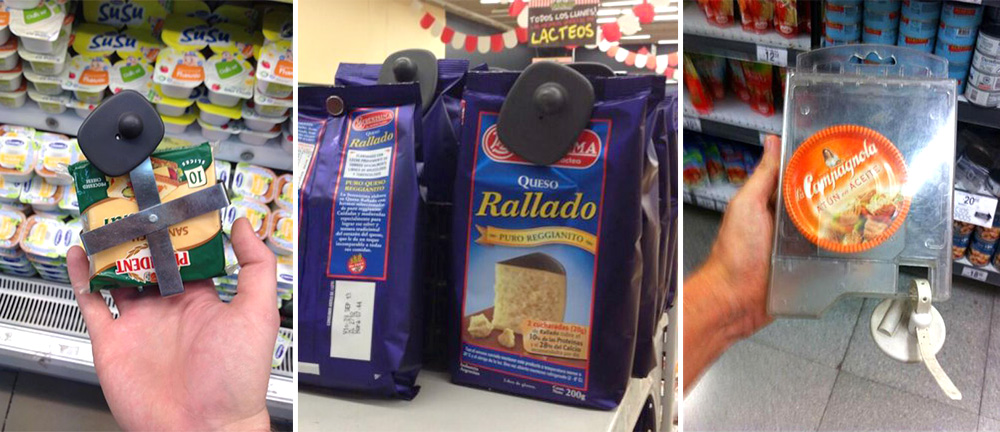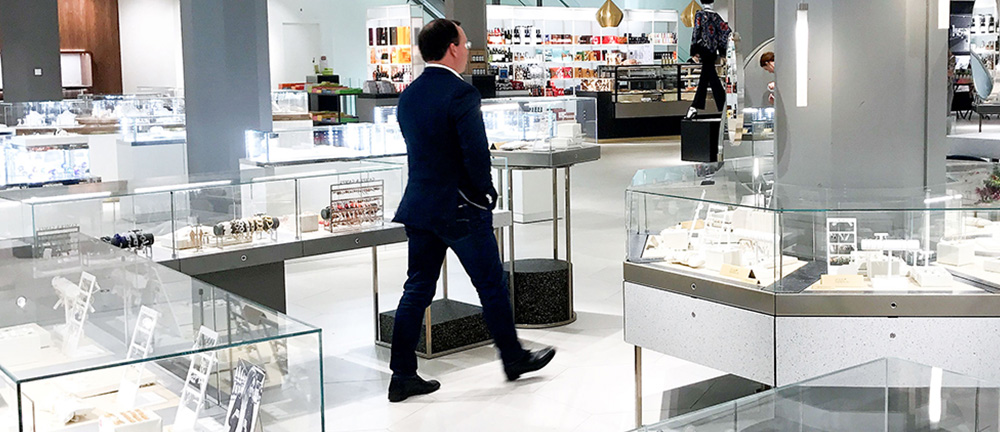Striking the loss prevention balance to avoid anti-theft overkill

Theft prevention might be at the forefront of many store manager’s minds, but like any strategy, it’s about striking the right balance and using the correct technique in the right place.
Treading the fine line of loss prevention and product appeal often involves securing your stock in a way that is unobtrusive and functional yet still renders the product attractive to buyers.
In an age where the customer experience is at the heart of real-world retail, here’s a quick insight into common mistakes that results in anti-theft overkill, and tips on using the best security strategy to avoid these errors.
Anti-theft overkill
Anti-theft overkill occurs when the method used to protect an item is either disproportionate to its value or is so obtrusive that it acts as a deterrent to customers from interacting with the product prior to buying. And the upshot is, it can have a negative impact on overall sales.
Anti-theft overkill can:
- Affect the image of your brand and store
- Deter customers from buying or trying your product
- Negatively impact the relationship with your consumer
The right technique in the right place
From smart locks to electronic article surveillance, the loss prevention sector has come of age in recent times, with a range of suitable options now available to not only protect your stock against theft but offer a minimalist and pleasing aesthetic when it comes to countering retail shrinkage.
The art of using these new techniques to have maximum effectiveness comes down to understanding the value of your stock, knowing which stock is likely to be targeted and finding the security solution that suits.
Getting it right
There are several factors to consider when finding out what strategy is right for your products. These include:
- The value of the item
- The volume of sales
- How customers need to experience that product to encourages sales
- The item’s likelihood of theft
- It’s positioning in your store
When you have determined these factors, then choosing the right solution to suit is simplified.
Electronic Article Surveillance
Since electronic article surveillance first hit mainstream in the 1960s, a wealth of tags and labels have become available that suits different merchandise and perform different tasks. Over the years many of these tags have harnessed new technologies and become smaller, stronger and unlikely to false alarm or have interference.
Meanwhile, EAS labels tend to be better for lower value stock with high volume in sales. This makes EAS labels the preferred option for grocery stores, pharmacies and bookshops. Just as labels and tags have become more accurate and intuitive, so have the pedestals and antenna that monitor them.
Advances in product technology means that the once obvious security pedestals can now be concealed into door frames, ceilings and even floors, offering a subtle and effective monitoring system.
Lockable displays, cabinets and drawers
The glass display has long been a tool for retailers looking to showcase high-value stock while securing it adequately.
And again, modern technology makes this method less cumbersome and more intuitive than ever before. The major advantage of smart Locks are that it results in the Sales attendant having just one key to unlock a range of cabinets, drawers and even tablet displays. Another benefit of the IR Key when partnered with available software in Access Manager is that the key can be coded to grant or restrict access to a cabinet while also tracking which staff member is accessing a certain cabinet, display or drawer. This has a significant impact on internal theft.
What product, which strategy?
-
Low-value items
If the product is of low value but high in volume, such as groceries or pharmaceuticals goods, then staff monitoring, CCTV, and where appropriate labels are better suited to do the job than hard tags or locking an item in a display cabinet.
The key points to remember here is that the item needs to be accessible, still “hero” the merchandise rather than the security and the security feature needs to be easily and quickly disabled.
Other ways of combatting theft include positioning low value, high volume items in a position where they can be seen and monitored by staff.
-
High-value items
High-value products like electronics, handbags or designer apparel require a different approach. The high-value of the product will likely mean that the consumer wants to touch, feel and experience it prior to making a purchase.
-
For fashion and apparel
The best option is the use of security tags, and there is a range of products to help protect these items including clothing tags, and cable/lanyard tags that can attach an EAS tag to your products without a pin passing through the item.
-
For tablets and mobile phones
Security display stands or tethered alarmed displays works best. Security is often further supported by having one item on display but the remaining stock is secured in lockable cabinet or drawer.
-
Regularly stolen items
It is interesting to note that the items like electronic accessories, razors, liquor and sunglasses are among some of the most popular items to be targeted by thieves.
Some of these are high-value and some are minor, but their small size makes them easy for shoplifters to conceal and remove from your store.
Now, for retailers looking to combat the theft of these items, there is a range of options available. These include lockable display hooks and hard tag spider or package wraps for electronic accessories, bottle tags for liquor bottles and small unobtrusive tags for eyewear.
Meanwhile, many retailers employ different tactics like time delay locking hooks for low value products that are easy for criminals to turn over quickly, such as often targeted products like razors.
You can learn more about the different types of tags, labels, locks and security options available here.
